I Having Trouble With Art Paint Dry Out to Fast
Lumps, bumps and clumps—sounds similar a medical bear witness. What causes these in our poured paintings and how tin you avert them in the future? Nigh of the time they are easy to predict and avoid. Hither we are going to troubleshoot the reasons and provide tips on how to avoid them in the hereafter.
Floetrol
Get-go culprit is Floetrol. You will need to strain the Floetrol prior to adding it to your paint. This film demonstrates why.
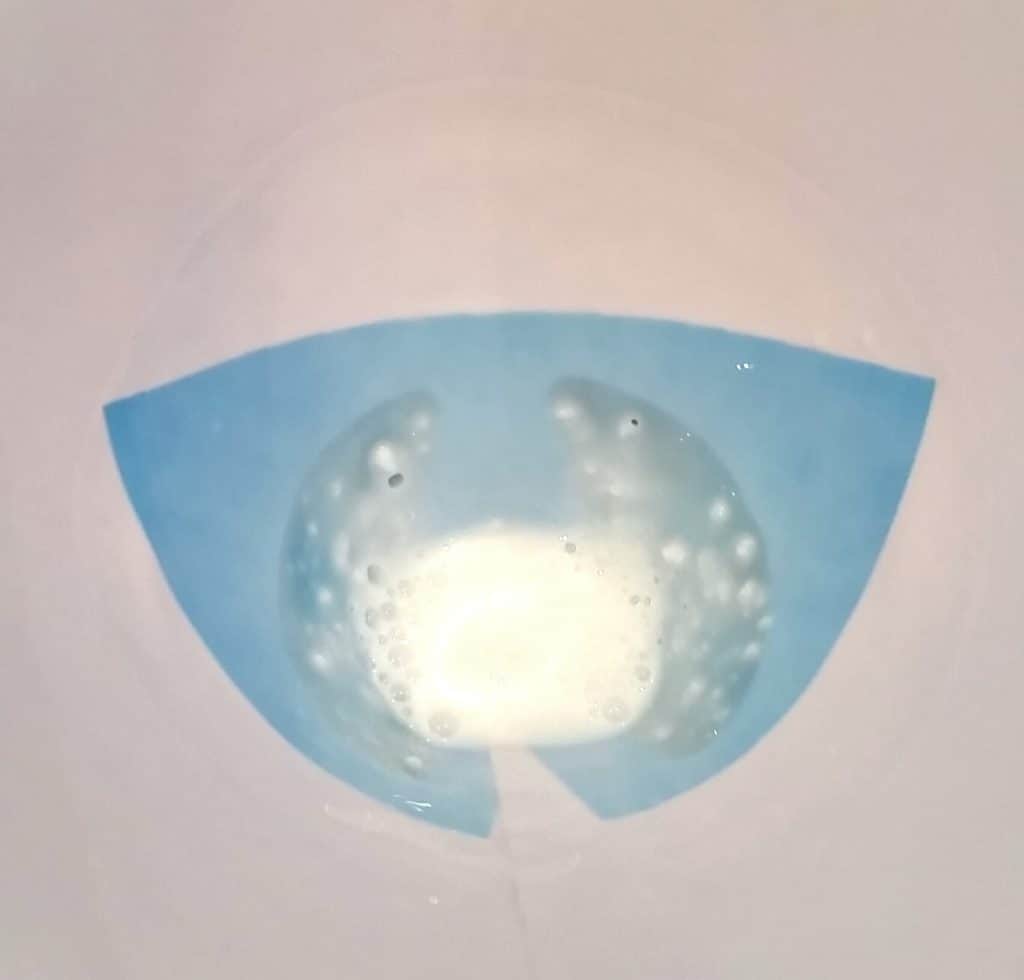
I use a disposable pigment strainer every time I use Floetrol equally it usually will accept these lumps in information technology that will go directly onto your canvas if y'all don't stain first. Information technology's piece of cake to do and prevents the nasty surprise of lumps in an otherwise beautifully smoothen surface.
Unmixed Paint
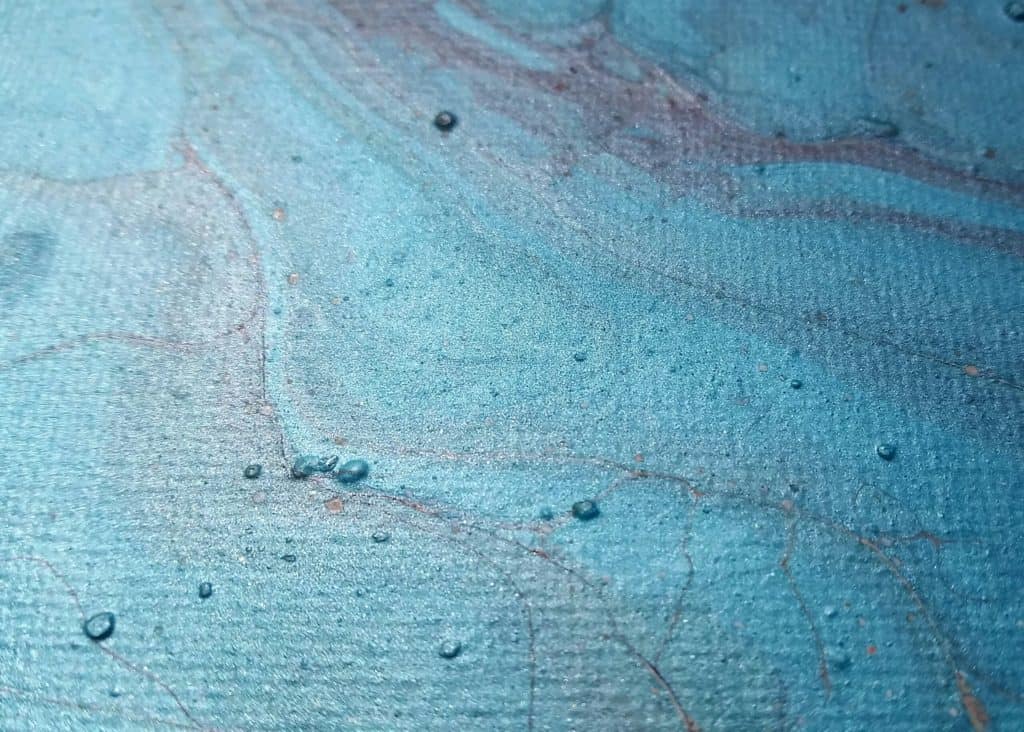
You have strained the Floetrol and you see difficult lumps under the surface that don't smoothen out or popular with a torch. These are likely to be unmixed paint. Especially if you are using a thicker paint and trying to mix it in with a medium. Try this side by side time: cascade a little medium in the cup get-go so add together your paint. Mix this with a stir stick past slap-up it up against the sides of the cup. In one case you are comfortable that all clumps are gone, continue adding medium to desired consistency.
Dust or Floaters in the Air
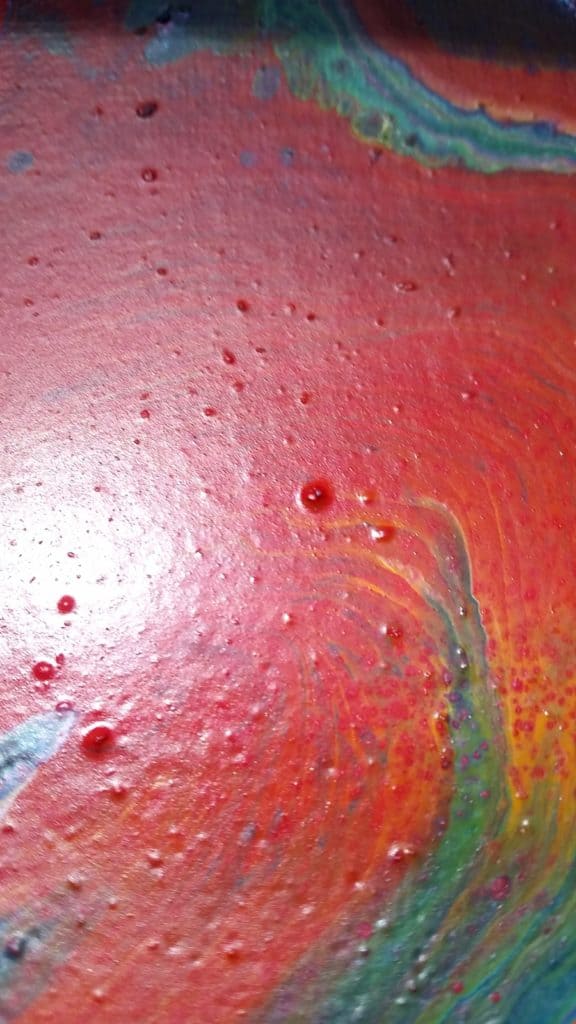
This pic shows a combination of lumps, bumps, and clumps. A sign that I was actually lazy that night. I didn't wipe off the canvas prior to painting, and then who knows what pieces of dust, lint or other floaters were under there. I got the canvas out of the closet, it hadn't been covered by anything and I'm not sure how long information technology had been sitting up in that location. So, to avoid this, be sure to wipe off your canvas with a barely damp soft material to remove all dust, lint, hair or anything else that might have settled on it, even if just sitting uncovered overnight. This ugly outcome was the accumulation of all the floater and my laziness to make clean information technology off start. The next morning it was tossed, no way to save it.
Paint is Too Thick
E'er have a painting expect great until it starts to dry and so you realize there are the long waves of thickened paint or larger clumps that you can't explain?
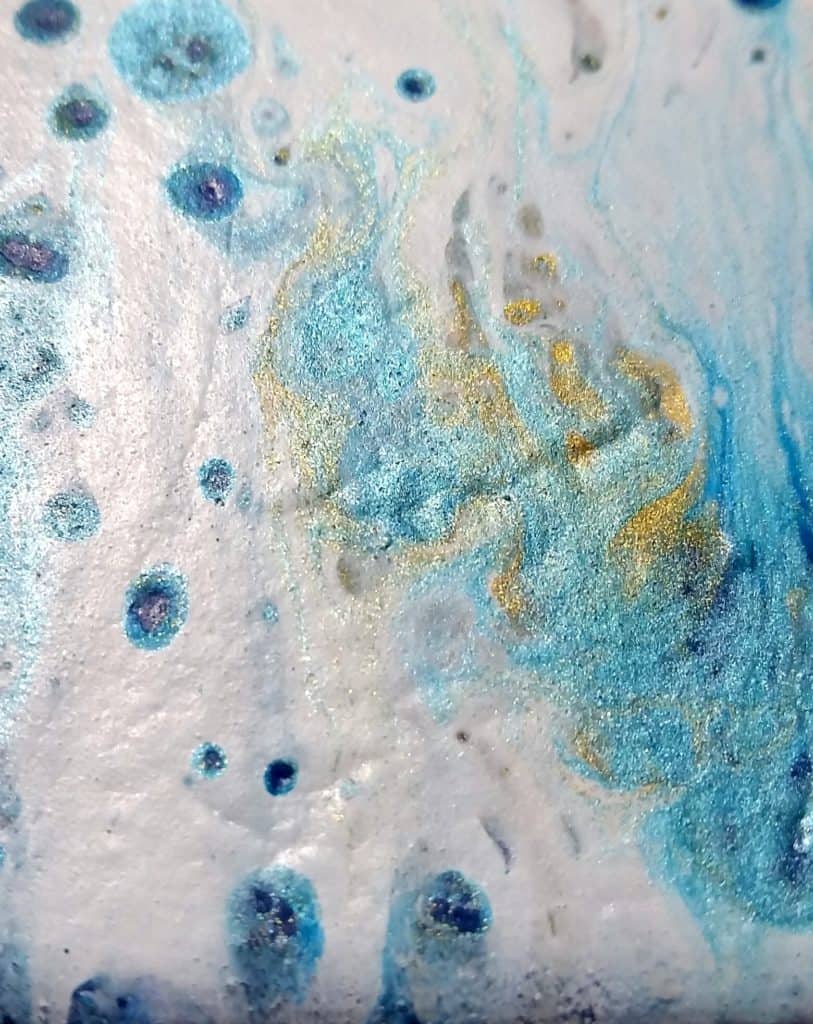
In this picture you can see what it might look like when dried, this was from one or more than of the paints being too thick. Be sure you test the consistency of the pigment prior to adding to your pour cup or pouring direct on the canvas. The pigment in the cup when drizzled off the end of your stir stick should exist smooth with the paint in the loving cup. If the paint drizzle sinks into the paint, its besides thin; if information technology forms a mound, its too thick. Adjust your mix accordingly.
This includes your base layer. Don't be fooled by thinking the base coat can be thicker as long every bit the rest of your pour is the right consistency. That'southward what happened hither. The white base of operations glaze was too thick and every bit the poured paint tried to flow over the top, it ended upwardly pushing rather than flowing, creating the thickening globs as it dried.
Pigment is As well Thin
So, you take a nice consistency on all paint except ane which just might be a petty thin. Can that cause problems?
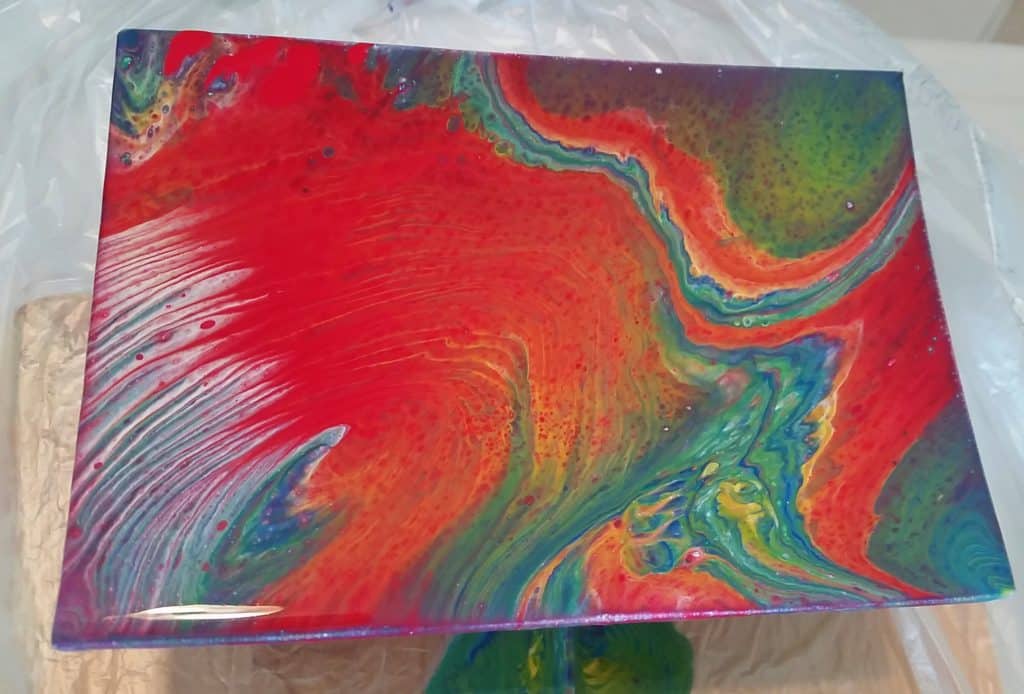
Yes of course. Hither you tin see the ruby-red paint was also thin and although in some areas it did fine, others similar the edge it almost disappeared under the white and the same with the yellow in the middle. The spots shown, and not covering over a base layer are telltale signs of paint that is likewise thin.
Refer to consistency in paragraph higher up related to how to mix the correct paint consistency.
Silicone/Cells
You lot added silicone but the cells are and then tiny information technology doesn't look right or it'south just not what you wanted or expected. Why?
![]()
Silicone is a great additive to use to create cells, but information technology likewise must be handled with care. Here you can encounter tiny cells that simply expect like messy soap bubbles. This was the result of mixing besides much. If you utilize a thin silicone similar treadmill oil , you should merely stir the silicone/pigment mix iii to four times, otherwise y'all will interruption down the silicone causing these tiny results. If you use kokosnoot oil , yous tin can stir six to eight times as it is a thicker silicone and will not break down equally easily.
Colors are Muted or Muddied When Dried
You have carefully chosen your colors for your cascade, and everything goes peachy — until it stale. And then yous notice it is blah, the colors don't popular and the contrast that was in that location in the wet cascade has totally faded. Why?
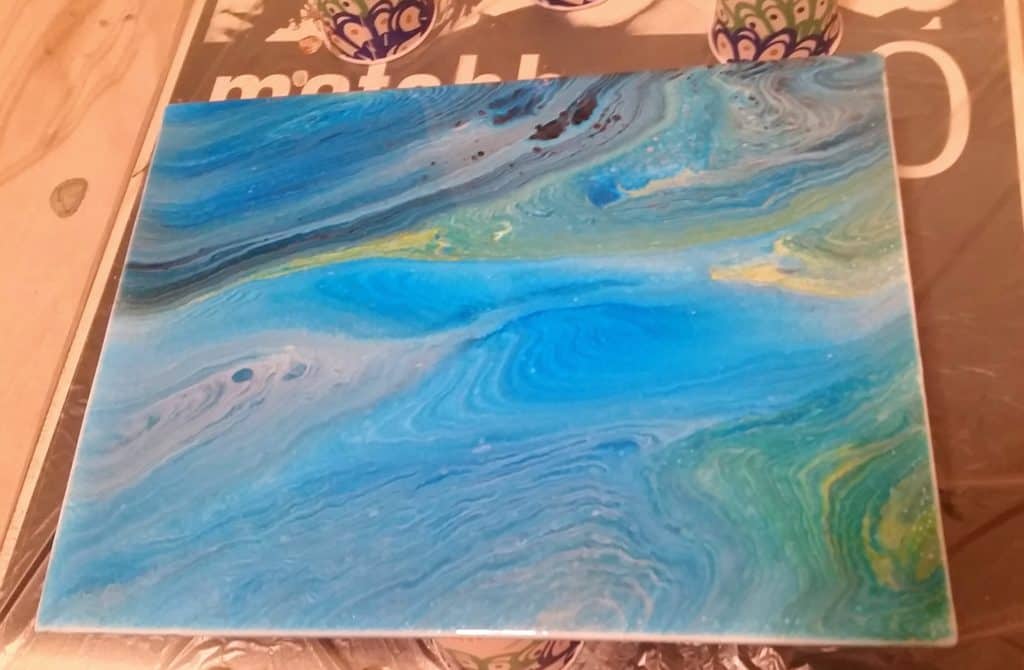
Well there are several reasons why this may be.
1: The colors are too close in shades or hues to each other — basically non enough contrast to begin with.
2: You may take used too much of one color vs. spreading out the colors in layers.
3: As was the case in this blue pour, I used a calorie-free grey as my base. When you use a colour other than white every bit your base when pouring light colors, you will accept a more subtle or fifty-fifty dingy upshot. Here the gray base gave the medium blue a lighter greyish blue tone, and nearly over powered the yellow.

While this in no way encompasses all paint pouring issues I promise these accept helped and given you lot some ideas of what to look for; and how to avoid some of the most mutual mistakes with paint pouring. I believe that everyone makes mistakes and needs a hand from time to time, and as swain artists we demand to exist the one who lends it. Take care and never stop asking questions.
Since she began creating fine art in 2007, Tina Swearingen's focus has evolved from repurposed conceptual art into the inventiveness and catamenia of acrylic pouring. Her pours are inspired by the movement and colors of Southern Arizona's amazing thunderstorms, and the majestic dazzler of the Pacific Northwest, which she now calls dwelling house.
Source: https://acrylicpouring.com/acrylic-pouring-problem-solving/
0 Response to "I Having Trouble With Art Paint Dry Out to Fast"
Post a Comment